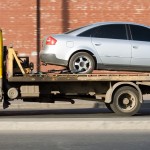Using your Dbi Sala fall protection equipment for the first time? Or maybe it’s the beam clamp? Whatever you’re working with, here’s some useful information from OSHA on why you need those tools:
What’s Fall Protection?
Fall protection is divided into four major categories: Fall arrest, positioning, suspension and retrieval. The fall arrest system is all about stopping an employee from falling. Positioning is about holding the worker in place to help prevent any sudden moves that could let a strap or a rope loose, which could easily lead to an accident. Any sudden movements are discouraged for this reason. Suspension revolves around the systems that lower and support workers, hands-free, allowing them to do work like wash windows or paint walls. Retrieval systems follow a fall and set the guidelines on how to properly retrieve a worker.
Fall Protection Systems
Dbi Sala fall protection equipment, along with your safety harness and beam clamps, is used to keep you safe from a fall. This is vital when you find yourself in a dangerous, high-pressure work environment like a construction site. However, regardless of how exceptional your equipment is, there are plenty of reasons for it to fail on the field if not cared for properly. Here are a few tips you should remember when using fall protection equipment:
-
Know how to use it. The best equipment won’t help you if you haven’t the foggiest clue how to use it on the field. Plenty of practice helps. That way, you’re not just physically but mentally prepared for the challenge.
-
Always look for wear and tear. Tears and cuts in webbing or dents, bends and signs of corrosion and distortion in hardware are among the most common signs of wear and tear in your equipment. You should always carry out inspections with the goal of catching any of these before the damage becomes even more extensive and harder to contain.
-
Intensity of Use. Rough treatment of equipment can also shorten its lifespan and set you up for faster distortion and wear and tear. Take care of your tools. They’ll last longer if you do.
-
Frequency. Remember that the longer and more frequently you use a certain piece of gear, tool or equipment—like ropes and belts—the more you need to have those inspected and tested for damage.
-
Environment. Exposing your equipment to harsh weather conditions as well as drastic temperature changes can accelerate the wear and tear in your equipment.
These are just 5 tips to remember when you use your fall protection gear and tools. Keep them in mind as you follow the rest of the safety guidelines at your workplace to ensure your safety and protection at work.








